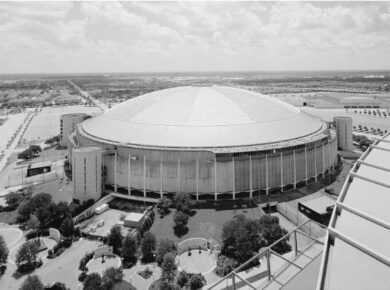Remembering America’s Mall Maestro.
Jon Jerde (b. 22 January 1940 – d. 15 february 2015),is an american architect who designed the 1984 Olympic Games in Los Angeles, the Fremont Street Experience in Las Vegas, and the Mall of America in Bloomington, Minnesota. More than any designer, Jerde took a quintessential American concern—consumerism—and gave it its built form.

Photo: Ryan Companies/DLR Group via Bloomington City Council/Port Authority
His theatrical shopping malls and urban centers are cathedrals of late capitalism. His work is ubiquitous in the U.S., but the influence of the California architect extends far beyond his projects. The Guardian architecture critic Olly Wainwright writes that Jerde “revolutionized the shopping mall, blowing open the walls of the big box shed and injecting the magic of the theme park.”

Photo: Tourism Media
More than any other designer, Jerde invented the model for the themed shopping experience. He constructed thrilling, multi-levelled worlds connected by spiral staircases and swooping ramps, supercharged urban stage sets that sampled styles from across time and place with promiscuous glee.

Photo: Jerde.com
A billion people walk through a Jerde project every year, according to his practice. There is barely a city on the planet left untouched by his influence. Cities called on him to design monumental cityscapes in order to revive downtowns that were losing shoppers to suburban strip malls.

Photo: Jerde.com
Perhaps the greatest of these is the Fremont Street Experience. Over the course of the 1970s and ’80s, retail and office tenants started moving away from downtown Las Vegas, while the city’s casinos and gaming establishments gravitated toward The Strip. By simply capping four city blocks with a latticework canopy—and adding a light-show worthy of Vegas to the street itself—Jerde rescued this part of downtown.
About the Author:

Bruno Dursin – Managing Director at Believe in Steel. Bruno has more than 30 years of experience in promoting steel & steel solutions. His clients benefit from his extensive network within the building industry.



